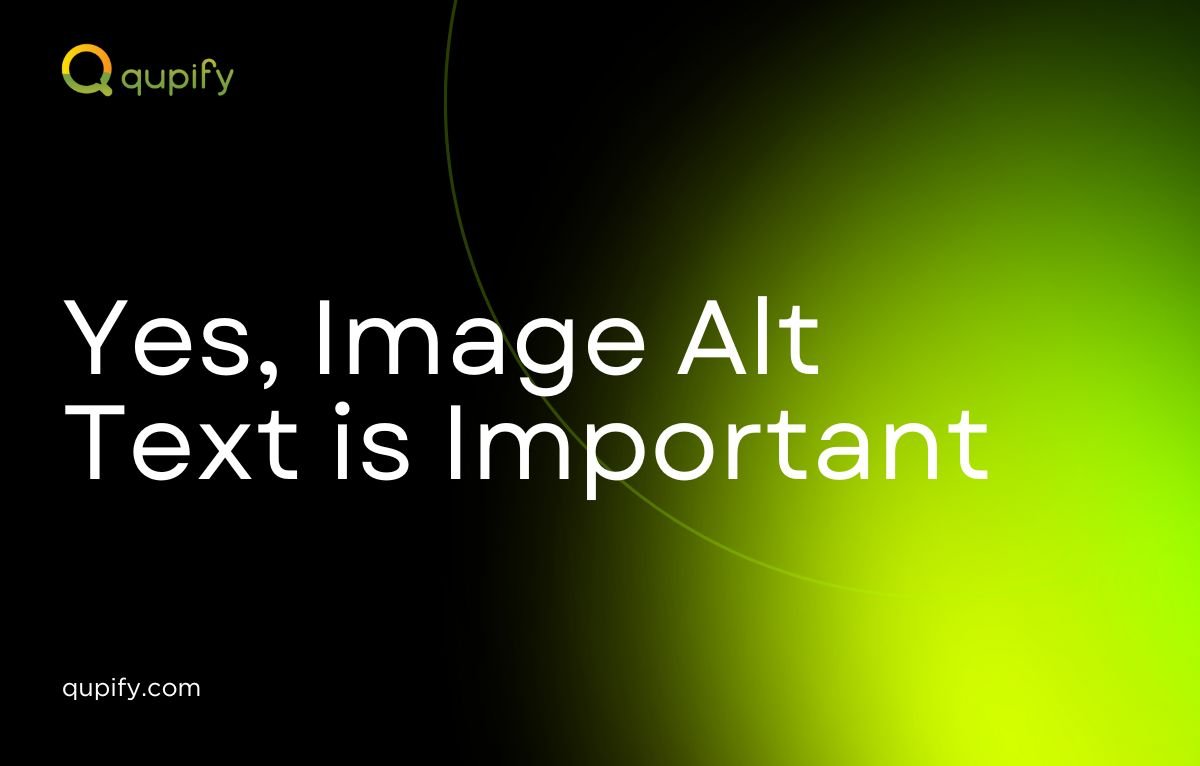Did you know that nearly 92.3% of global web searches happen on Google? Improving your website’s search visibility is crucial, and image optimization plays a significant role in this process.
One often-overlooked element is image alt text. This small but mighty feature can significantly improve your site’s SEO while making your content accessible to everyone.
Adding alt text to your images ensures that both users and search engines can interpret your content.
In this article, we’ll discuss how image alt text impacts SEO, practical tips for implementation, and the best practices to maximize its effectiveness.

Alt text, short for alternative text, is a brief description embedded in an image’s HTML code. Its primary purpose is to describe the content of the image to users who may not be able to see it, such as those using screen readers or when the image fails to load.
Alt text is important because it helps search engines and users understand the meaning of your images. It improves your site’s visibility in search results and makes your content more accessible.
Below are the main ways alt text can help with SEO:
Search engines can’t “see” images, so they use alt text to figure out what the image is about. For example, instead of saying “image1.jpg,” using text like “a girl holding a yellow umbrella in the rain” gives search engines clear information to work with.
Alt text with relevant keywords makes your page match what people are searching for. If your page has an image with “homemade pizza recipe,” it’s more likely to show up in searches about pizza recipes.
Good alt text helps your images show up in Google Image Search, bringing more people to your website. For example, writing “handmade ceramic coffee mug” as alt text can attract users searching for mugs like this.
Alt text makes your site accessible to visually impaired users by describing images. It also helps when images fail to load, so visitors can still understand the content. This improves how long people stay on your site, which can help your SEO ranking.
Clearly describe the image while keeping the text short and focused. For example, instead of “A nice picture of a cute cat,” write “A gray tabby cat sleeping on a blue couch.”
Include relevant keywords, but avoid overloading the alt text. A description like “glass jar filled with organic honey” communicates both content and context effectively.
If an image doesn’t add value to the content, leave the alt text blank or use alt=”” to signal its decorative nature.
Use tools like Google’s Lighthouse or WAVE Web Accessibility Evaluation Tool to ensure your alt text is helpful and compliant with accessibility guidelines.
At Qupify, we understand that effective SEO is about paying attention to every detail, including image alt text. Our team offers tailored strategies to help you make the most of this often-overlooked feature.
Alt text is a simple yet powerful tool to improve your website’s SEO and accessibility. By writing clear, descriptive, and keyword-rich alt text, you help search engines understand your images and make your content more inclusive for all users.
It’s a small effort that can lead to better rankings, more traffic, and a positive user experience.
Start optimizing your image alt text today to see the difference it can make in your website’s performance.